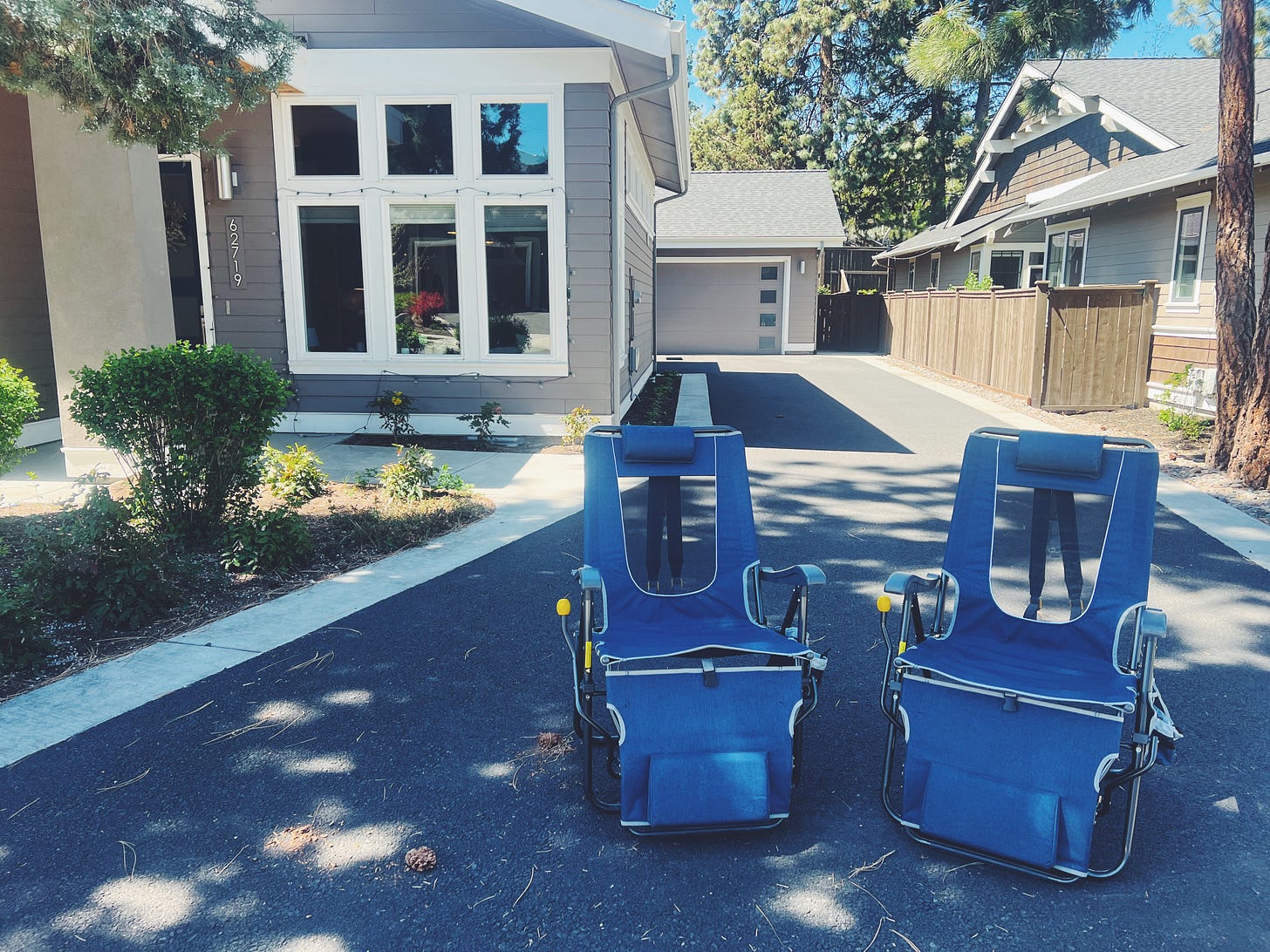Put your chairs in the front
Stoop culture and designing your own porch
In this moment in which we are watching warfare unfold, both in high definition and interspersed with targeted ads for sexy summer hats, I have been thinking a lot about the role of the witness in the time of publicized mass genocides. AND that has led me to a smaller question:
What does it mean to witness in our own little home places? In our creative work? To build in the space for it in the experiences we design?
I didn’t grow up with front porch culture. Or a stoop. I grew up on a busy street where we had to keep the gate closed so as not to be auditorily lawn mowered. But last year my wife-to-be and I moved to a place where people put their fire pits in front of their house, rather than in the back. Where most folks keep two little chairs by the front door and people actually sit in them.
It’s the thing my friends who live in Brooklyn have always told me about. That if you sit on your stoop all kinds of weird and unexpected and delightful magic will unfold. Your neighbor will offer your child a popsicle and you will pet a cute dog and you will see someone walking down the street playing their trombone just because they feel like it and quite soon there will be more people sitting on your stoop than when you began.
My front door here is behind a large bush. So I have taken to just putting two lawn chairs in the middle of our driveway. It works all the same.
It’s only ten feet away from my former location – on our couch, watching the world go by through the window. But it is a different experience entirely. You are no longer the watcher. You, too, are the happening. Eye contact and chit chat and noticing. You gather tidbits of facts far more quickly this way: The name of the small child who rides their kick bike in small, dizzying circles around your culdesac for hours before collapsing. That the author of the book you are reading while sitting out there is actually coming to the highschool in town to give a talk next week. That the bird in your birdhouse has gotten too spring-chubby to fit through the hole and you need to widen their door.
And here’s what this makes me wonder about experience design:
How can we design more front porches?
Sure, yes, some experiences benefit from secrecy and privacy and mystery. (Yes, I am glad my dentist cleans my teeth inside, not outside, the office.) But we treat many more of them that way than actually benefit from it. Instead, how might we make our thresholds more porous? How could we live and work and make and play and think and practice a little more in public? So that we might be influenced by the places we are in? So that others feel welcome to invite themselves in for a moment, or a season?
*A quick caveat. This is very explicitly NOT a recommendation that every business and endeavor get an instagram and ask you to follow them on facebook (yes, my dentist has an instagram and no I do not want to subscribe).
But maybe this looks like you taking your project and moving some of the visual work you are doing outside the walls of your personal office space, so that those wandering by stop to have a chat about it and lo here come spicy new ideaseeds for you. Or maybe it means building in unhurried time in the retreat you’re hosting to sit and think and watch in the place you’ve flown all these folks to. Maybe it’s the time in your brainstorm where you ask your five-year-old work-from-home co-worker to participate, because they might not understand pivot tables but boy do they understand good stories.
So here is your assignment, should you choose to play:
Go sit on your stoop. Or your porch. Or your coffeeshop’s deck. And just notice. Participate in the life that’s happening. What does it feel like? What do you feel like?
Try designing a front porch into whatever you’re making: your fantasy novel, your farm, your weekly team drumbeat, your raising of your cute baby. And tell us about it.
Yours, Olivia



